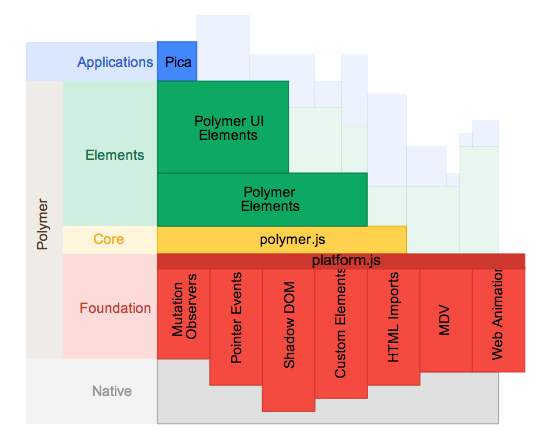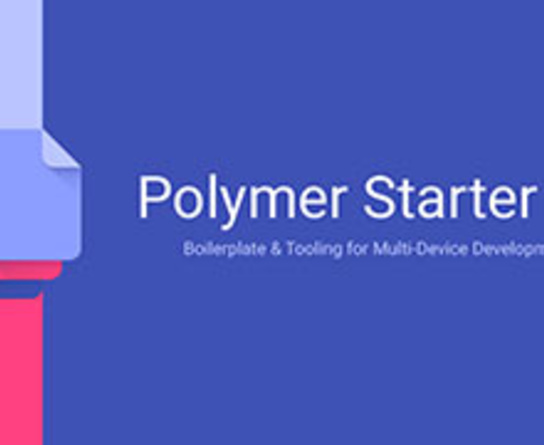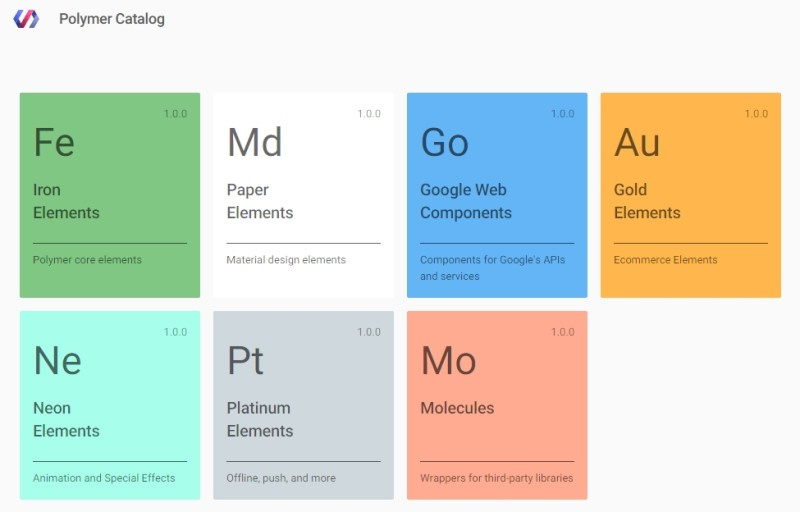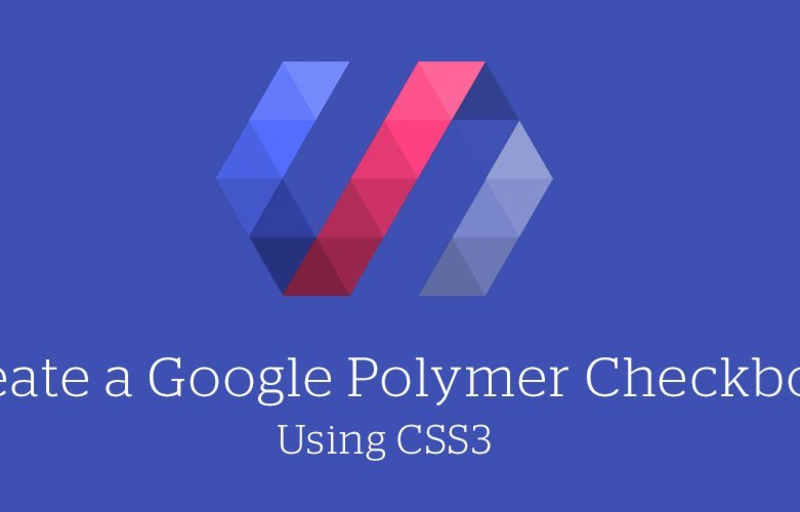Essential points you need to know about Google Polymer

The fascination of Polymer is derived from its claim of placing elements as the fundamentals of web development. With Polymer.js, the ability to craft your own HTML elements and compose them into complete, complex web applications that are both practical and manageable is a fascinating thing.
Furthermore, Polymer’s elements are deemed the building blocks of the web and are based on reusing the current element paradigm (leveraging on an existing native browser) to construct more powerful web components.As the Polymer library allows you to create powerful elements, it provides web developers tools like templating and data binding to reduce the amount of boilerplate you need to write.
Here are lists of examples of Polymer codes:Inputting Google Maps
<!-- Polyfill Web Components support for older browsers -->
<script src="components/webcomponentsjs/webcomponents-lite.min.js"></script>
<!-- Import element -->
<link rel="import" href="components/google-map/google-map.html">
<!-- Use element -->
<google-map lat="37.790" long="-122.390"></google-map>Create your own elements:
<dom-module id="contact-card">
<link rel="import" type="css" href="contact-card.css">
<template>
<content></content>
<iron-icon icon="star" hidden$="{{!starred}}"></iron-icon>
</template>
</dom-module>
<script>
Polymer({
is: 'contact-card',
properties: {
starred: Boolean
}
});
</script>The <firebase-collection>
Build more sophisticated elements by composing simpler elements together to retrieve data from a Firebase database.
<dom-module id="friend-list">
<link rel="import" type="css" href="friend-list.css">
<template>
<firebase-collection data="{{data}}"
location="https://users1.firebaseio.com/users">
</firebase-collection>
<template is="dom-repeat" items="{{data}}">
<contact-card starred="{{item.starred}}">
<img src="{{item.img}}" alt="{{item.name}}">
<span>{{item.name}}</span>
</contact-card>
</template>
</template>
</dom-module>
<script>
Polymer({
is: 'friend-list'
});
</script>
<friend-list></friend-list>Benefits of Google Polymer:
It is said the new library is about three times faster on Chrome, four times faster on Safari, and a third less coding required than in developer preview. Also, it’s ready to be used in production applications and deemed to be easier for developers to produce feature rich apps and websites.
Polymer is also great for reducing web development complexity as well.Reduces the gap between developers and designers
Polymer guarantees an easier working relationship between designers who uses Web page UX and developers who are concerned with Web page functionality. Developers are given Polymer elements which include designs and themes, which mean there isn’t a need to modify complex Web page source code to match designers’ specifications.
The Architecture of Google Polymer

Native: Fundamental features that are available natively in all established browsers (Chrome for example).
Foundation: Polyfills that are found in browser features and are haven’t been natively available in the browsers themselves.
Core: The indispensible infrastructure required for Polymer elements to take advantage of the capabilities provided by the Native and Foundation levels.
Elements: A basic set of building blocks that are the driving factors to create your application. Elements’ functionalities consist of: animation, flex layout as well as encapsulation of complicated browser APIs and CSS layouts.Encapsulation of three languages
Back then, developers had to use a combination of HTML, CSS and JavaScript, to create web pages which is absolutely a chore if you to apply any modifying, debugging and reusing. The Google Polymer is great in that it encapsulate the three languages into functional component elements from which Web pages can be constructed, reducing development complexity and boosting reuse, which creates app-like, immersive experiences on the Web.

Components for nearly any app, out of the box
Get started quickly with the complete set of the same paper and iron elements used by Google products.
Complete build chain
Build your app using a suite of gulp tasks that leverage the full range of Polymer-related tools, such as vulcanize, crisper, and more
Testing made easy
Test your app and all of its components using the built-in and pre-configured Web Component Tester.
Flexible app theming
Easily theme your entire application, including the built-in elements, using app-level Custom CSS Properties.
Framework-free, or framework-compatible
Build your app out of elements, or wire in an external framework to handle business logic. It's up to you!
Responsive app layout boilerplate
Start off mobile-friendly with the included layout boilerplate.
Live Browser Reloading
Reload the browser in real-time anytime an edit is made, without the need for an extension.
Material design ready
Use the built-in paper elements to create a full material design-style app.
Source: https://developers.google.com/web/tools/polymer-starter-kit/index?hl=en
Play through different catalog of elements for third-party libraries that can be incorporated into Web applications seamlessly.
Iron element (FE)
Iron elements are a set of visual and non-visual utility elements. They include elements for working with layout, user input, selection, and scaffolding apps
Paper element (Md)
Paper elements are a set of visual elements that implement Google's Material Design.
Google Web Components (Go)
Google Web Components (eg, Google Analytics, Google-Apis, Google-calendar, Google-castable Video (HTML 5 Video), Google Maps and Google youtube)
Gold Elements (Au)
The gold elements are built for E commerce use-cases like checkout flows
Neon Elements (Ne)
Neon elements implement special effects
Platinum Elements (Pt)
Elements to turn your web page into a true web-app , with push, offline, and more.
Molecules (Mo)
Molecules are elements that wrap other JavaScript Libraries



 James
James






